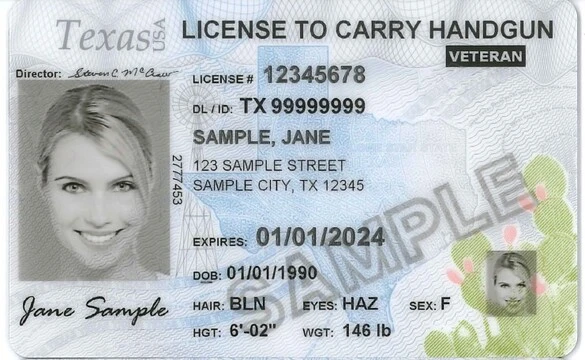If you own a handgun in Texas, or you're thinking about it, there's a law you need to know about. It's called the 'Duty to Inform,' but its official name is Texas Government Code 411.205. Now, you might be wondering why this law is a big deal, especially since you won't get in trouble if you don't follow it. But make no mistake, it plays a key role in being a responsible gun owner. Let's jump in and uncover the details of this law and why it matters so much in the world of Texas gun laws.
Understanding Texas Gun Laws
Texas has a reputation for upholding the Second Amendment rights of its citizens, fostering a culture where gun ownership is common. However, with this right comes responsibility. Familiarity with and adherence to gun laws, such as Texas Government Code 411.205, ensure public safety and responsible gun ownership. This law exists within a broader framework of Texas gun regulations designed to balance personal liberty with public safety.
The Specifics of Texas Government Code 411.205: Requirement to Display License
Let's dive into the details of Texas Government Code 411.205. When carrying a handgun on or about one’s person, the license holder is required to display identification if a magistrate or peace officer demands it. The identification shown should be both the handgun license and the driver's license or identification certificate.
If the handgun license bears a protective order designation, the license holder should also present a copy of the applicable court order. This protective order designation indicates that the license holder is under the protection of a court order, which is a crucial detail for law enforcement to be aware of.
The Role of Peace Officers and Magistrates in Enforcement
Peace officers and magistrates hold significant authority in ensuring the adherence to Texas Government Code 411.205. If a license holder is carrying a handgun and an officer or magistrate demands identification, the law requires the presentation of both personal identification and the handgun license. This requirement helps ensure that only eligible individuals are carrying handguns, fostering safer communities.
Respect and Transparency in Interactions with Law Enforcement
When interacting with law enforcement, demonstrating respect and transparency can go a long way. Although Texas Government Code 411.205 requires license holders to show their handgun license only when they are carrying, some choose to present it even when they're not. This action signifies respect, offering peace officers complete disclosure, potentially fostering a more positive interaction. After all, knowledge is power, and giving an officer full knowledge can empower them to make the best decisions.
What Does it Mean to Carry 'On or About' Your Person?
The phrase 'on or about your person' may sound like legal jargon. Simply put, it means carrying the handgun on your body or within easy reach. This could mean in a holster on your hip, in your backpack, or in the glove compartment of your car. If the handgun is in a location easily accessible to you, you are considered to be carrying it 'on or about' your person.
Protective Order Designations in Texas
A protective order designation on a handgun license indicates that the license holder is under a court's protection. This could be due to various reasons, like domestic violence. In such cases, the license holder should provide a copy of the court order when presenting identification to a peace officer or magistrate. This information could significantly influence how an officer handles the interaction.
Consequences for Not Displaying Your License in Texas
While the law requires displaying both personal identification and a handgun license when demanded by an officer or magistrate, not everyone abides by this requirement. Failure to do so will not result in penalties, however. It's really just meant to be polite to the officer.
Handgun Licensing in Texas: Getting Your Permit
Obtaining a handgun license in Texas involves several steps, including completing a training course and passing a background check. While the process may seem complex, it is designed to ensure that only individuals who have demonstrated the necessary understanding of gun safety and the laws surrounding firearm use are granted a license.
Texas Government Code 411.205 is one of the many laws a prospective license holder must understand. When you have your handgun license, it means you have shown you are aware of the legal responsibilities that come with carrying a firearm. This isn't just about safety—it's about respect for the law, for yourself, and for your community.
Conclusion
The Texas Government Code 411.205 may seem like a small detail in the grand scheme of gun laws, but understanding its specifics can go a long way in fostering responsible gun ownership and respectful interactions with law enforcement. Showing your handgun license, even when not carrying, displays a level of transparency and respect for law enforcement officers, potentially leading to a more positive interaction.
Remember, understanding gun laws like Texas Government Code 411.205 is not just about complying with the rules—it's about contributing to the safety and well-being of our communities. By being informed, transparent, and respectful, we can all play a part in promoting responsible firearm use.
In summary, the key to navigating Texas Government Code 411.205, and any law, for that matter, lies in understanding the context, implications, and enforcement. It's not just about the letter of the law, but the spirit of the law, which in this case, is rooted in public safety and mutual respect.




